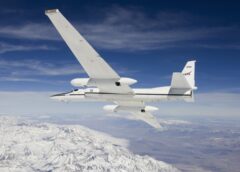
NASA will host a media teleconference at 10 a.m. CDT Tuesday, June 7, to discuss research about intense summer thunderstorms over the central United States and their effects on Earth’s atmosphere and climate change. A replay of the call will be posted on the agency’s website as soon as possible.
Media are also invited to speak with NASA mission members, who are studying these thunderstorms, at the mission’s base of operations at the Salina Regional Airport in Salina, Kansas, on Wednesday, June 8, from 8 a.m. – noon.
NASA and university scientists are studying thunderstorms for the second year in row as part of the Dynamics and Chemistry of the Summer Stratosphere (DCOTSS) mission. Though the storms develop in the troposphere, the lowest layer of Earth’s atmosphere where we live, intense thunderstorms can punch up into the next layer of the atmosphere, the stratosphere, and inject tiny atmospheric particles called aerosols, as well as water vapor. Mission scientists want to better understand how aerosols from tall, powerful storms affect the chemical makeup of the stratosphere, which is home to Earth’s protective ozone layer. In addition, the water vapor these storms inject is a potent greenhouse gas that can affect our changing climate.
Teleconference participants include:
- Kate Calvin, NASA chief scientist and senior climate advisor at NASA Headquarters in Washington
- Ken Bowman, DCOTSS principal investigator and professor of atmospheric science, Texas A&M University
Media interested in participating in the call should request the dial in-details at least two hours prior to the start of the call. Media interested in interviewing mission members in person in Salina, Kansas, must request access by 7 a.m. CDT Wednesday, June 8. Interested media in either event should send their full name, media affiliation, email address, and phone number to Elena Johnson at elena.n.johnson@nasa.gov or Joe Atkinson at joseph.s.atkinson@nasa.gov. For NASA’s media accreditation policy, please visit:
Based at Building 703 of NASA’s Armstrong Flight Research Center, located in Palmdale, California, the ER-2 aircraft will fly as high as 70,000 feet with 12 instruments attached to collect atmospheric chemistry samples that are carried above Earth’s surface and into the ozone layer by these intense thunderstorms.
For more information on DCOTSS, visit:


